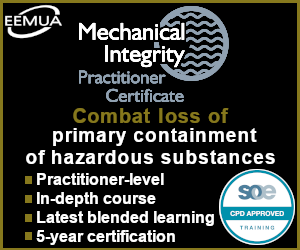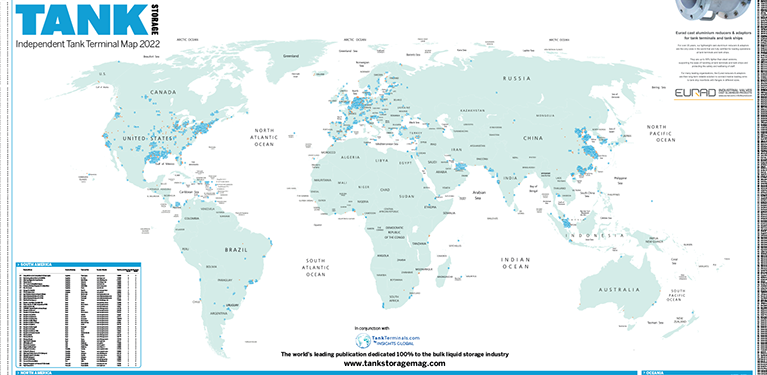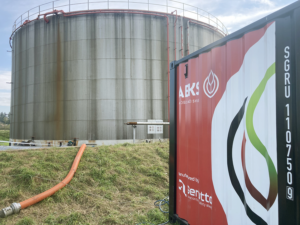Hayley Armstrong, partner at AJW, and Ravi Bhatiani, executive director of FETSA discuss how policy changes are impacting the global energy landscape
With scope 3 emissions reductions, ESG strategies and potential policy regulations helping to boost the energy transition, storage terminals have a range of incentives to meet transition goals. Hayley Armstrong, partner at AJW, and Ravi Bhatiani, executive director of FETSA, got together at Tank Storage Magazine’s latest Tank Talk, to look into the different routes to net zero and debate the way forward for storage terminals.
Policy Overview
Armstrong notes that the US has adopted a ‘carrot’ approach to the energy transition. ‘This is largely reflected through the Inflation Reduction Act and the Bipartisan Infrastructure Law,’ she says. ‘With these two pieces of legislation, we have seen quite a bit of activity with regards to the energy transition, and more recently we have seen that trickle down into the terminal industry.’ Armstrong notes that, whilst this approach can certainly get things kickstarted and drive innovation, without demand drivers and mandates, it can be a struggle to reach final investment decisions, stalling long term markets.
‘In contrast, the EU has taken a very prescriptive and centralised approach,’ Bhatiani says. ‘The EU has rules for alternative shipping fuels, with carbon intensity reduction targets of around 80% by 2050. There is regulation to build out alternative fuels infrastructure, and reform to the emissions trading system.’
Climate Targets
Key climate targets include a 55% reduction in emissions by 2030, a 90% reduction by 2040 and total net zero by 2050. Bhatiani reflects on how the Fit for 55 package is impacting Europe’s
preparedness; a set of proposals to revise, and new inititatives to put in place, with the goal of aligning with the climate goals agreed by the European Council and the European Parliament.
So, this approach incentivises future energy carriers and disincentivises fossil fuels. The incentives encourage a shift to a more electrified economy and phase ins of sustainable aviation fuel, with targets up to 70% by 2050.
Armstrong remarks on the challenges in the US. ‘I think inflation has caused some projects to not reach final investment decision. Changes in administration in different countries, means we’ve had the slowdown of policies being implemented or understanding the challenges as these policies do roll out in real time.’
Armstrong suggests that the 2030 climate targets are the most at risk. Given both 2030 and 2040 targets are implemented to help towards the final goal of 2050 being net zero, there is a sense of flexibility around the earlier targets. Bhatiani agrees: ‘We forecast quite a big shortfall in terms of the real-life emission situation and the theoretical targets that have been imposed.’
He suggests that the biggest contributing factors to this shortfall are the lack of feedstock availability for biofuels, the lack of commercialisation of e-fuels, and some very late decisions that were taken at EU- level when it comes to being able to use technologies like carbon capture.
A Global Convergence
Instead of global compliance with the climate targets, Bhatiani suggests a ‘global convergence’ is more likely: ‘This is based on everybody having to reach the 2050 net zero targets, yet with everyone moving at a different pace, subject to their citizens’ capacity.’
‘Whatever the future for energy carriers is, European terminals are going to be critical to its import and export because of the safety record, the strategic location, the logistics interactions, and we have shown ourselves to be at a pivot for energy flows, and the flexibility for European energy security,’ says Bhatiani. ‘If we really want to meet the 2030 and 2040 climate targets, there has to be greater neutrality in policy making when it comes to technology.’
Armstrong adds that the industry is pushing governments for harmonisation of standards, and ensuring that there is a cohesive global and cross-border approach. ‘Without this, it will be very difficult to meet those 2030, 40 and 50 goals.’ Additionally, she highlights that governments need to talk to terminals, understand what their challenges are and the complexities of storing these energy carriers, and understand what is holding back these investments. ‘On the US side, there has been communication with the terminal industry, but a lot of the focus has been on the production side, so those conversations really need to get started.’




















